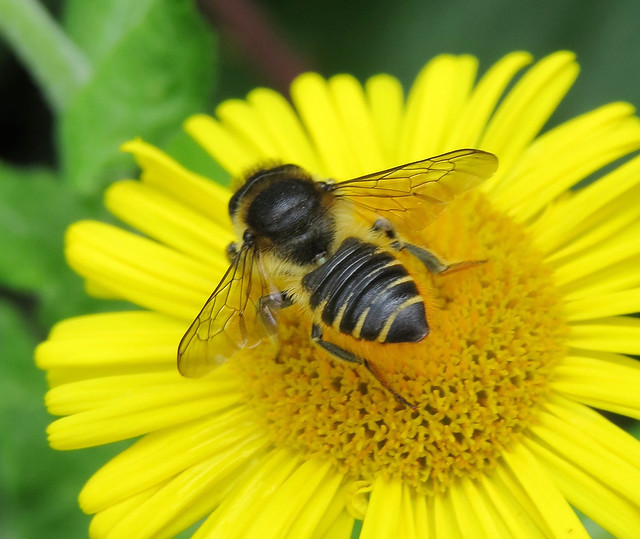My bee houses have been rewarding me with lots of activity from the Osmia cornuta in the past weeks. I’m sure they don’t need any help to find hollow nesting places but when they choose my hollow bamboo canes or drilled-out wood I have the pleasure of watching their antics.
The first I know that some bees have hatched is the frantic activity of the males. This 17 second video gives you an idea of what it looks like.
I admire the tenacity of the males who guard the holes against all comers. You can get the idea in this 16 second video.
The male can be easily recognised by the little tuft of white hair on his head. They are around several weeks before the females eventually hatch and then the excitement really mounts.
The mating is not an elegant affair and this pair managed to get stuck in the tube in a sort of impasse where neither was prepared to cede defeat.
I noticed this mating pair under the box and I was surprised by the females stoic non-resistance. That was until I saw the photograph on the computer and noticed that the male had a firm grip on her wings and back legs.
The male eventually decided to dismount and release her.
The female is a very attractive bee and is larger than the male, which is not uncommon in bees. She lays her eggs in hollow stems or crevices and supplies the future larvae with pollen for nourishment. She pushes the pollen firmly in place with the help of two little horns on her head.
The horns are under the antennae and as the horns are black they are difficult to see amongst the black hairs of her head. They are best seen in a photograph.
Once the females have emerged they begin their frantic search for the perfect hole. Despite the abundance of choice from our point of view the females have a need to explore.
Eventually one will meet her high requirements and the egg laying and pollen collection will begin.
Pollen collecting is a serious business even if putting it in place can get a bit messy.


















































































